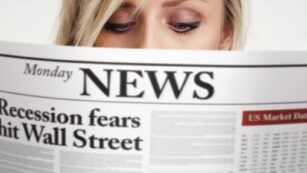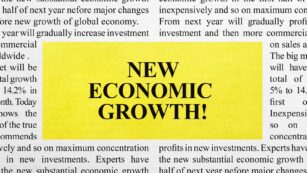
In the world of business, it’s survival of the fittest. Companies strive to build an ‘economic moat’—a term coined by investment guru Warren Buffet—to safeguard their market position and fend off competition. But what’s new in this arena? How are businesses fortifying their moats in an ever-evolving market landscape?
Economic Moat News
 An economic moat, a characteristic, or set of characteristics, of a company that gives it a distinct competitive edge. It’s these traits that, much like a medieval castle’s defensive moat, defend a business from the onslaught of competitors. The value in a company’s economic moat lies in its potential to safeguard market share and secure long-term profitability. Business magnate Warren Buffet describes a robust economic moat as the most desirable quality of an investment. This strategy, prizing moat maintenance and expansion, seeks steady revenues despite corrosive forces like competition and technology evolution.
An economic moat, a characteristic, or set of characteristics, of a company that gives it a distinct competitive edge. It’s these traits that, much like a medieval castle’s defensive moat, defend a business from the onslaught of competitors. The value in a company’s economic moat lies in its potential to safeguard market share and secure long-term profitability. Business magnate Warren Buffet describes a robust economic moat as the most desirable quality of an investment. This strategy, prizing moat maintenance and expansion, seeks steady revenues despite corrosive forces like competition and technology evolution.
Types of Economic Moats
Understanding the types of economic moats gives clarity to businesses aiming to build, strengthen, or diversify their protective barriers. Four varietiesgenerally categorize economic moats:

- Cost advantage: A business can produce or deliver a product or service at a lower cost than its competitors, amplifying their profitability. For instance, Walmart achieves this through superior supply chain management, enabling them to offer products at competitive prices.
- Intangible assets: Hidden strengths such as brand recognition, patents, or regulatory licenses can form a practical economic moat. Coca-Cola’s secret recipe exemplifies this, preserving their dominant market share in the soft drinks industry.
- Switching costs: When the expense or inconvenience of switching to a competitor’s product is high, a defensible economic moat arises. For example, software companies like Adobe create high switching costs through complex product ecosystems.
- Network effect: The more users a platform has, the more valuable it becomes to each user, thereby increasing its appeal. Entities like social media giants Facebook and Twitter demonstrate the network effect in action, expanding their user base and revenues simultaneously.
By understanding these types, entities secure a resilient position in their respective markets. As the march of change continues, keeping abreast of economic moats news becomes vital for sustained competitive advantage.
How Economic Moat News Affects Investment Decisions
Discussions revolving around economic moats are frequent in the realm of investing. This concept, popularized by financial guru Warren Buffet, identifies companies whose competitive advantages shield them from potential rivals. However, what may appear less evident is the impact such company traits could have on investor practices. Pertaining economic moat news, indeed, yields significant implications for investment decisions.
Identifying Strong Investments
 Investors, fundamentally, seek companies that generate sustainable, above-average profits. Given that economic moats foster such environments, news highlighting their presence becomes essential to identifying strong investment opportunities. For instance, Amazon’s immense brand reputation and logistical dominance constitute its substantial economic moat.
Investors, fundamentally, seek companies that generate sustainable, above-average profits. Given that economic moats foster such environments, news highlighting their presence becomes essential to identifying strong investment opportunities. For instance, Amazon’s immense brand reputation and logistical dominance constitute its substantial economic moat.
As these attributes enhance Amazon’s profit-making longevity, investors who honed in on this moat news could have benefitted from its escalating share value. In another instance, consider how Apple’s intangible assets, specifically brand loyalty and technological innovation, create its formidable economic moat. Regular following of the tech-giant’s moat news could guide investors towards a high-performing asset, warranting Apple’s position in their portfolios.
Timing the Market Based on Moat News
Staying apprised of economic moat news is more than just identifying strong investments; it aids in timing the market strategically. Fluctuations in moat indicators, such as transition periods or technological innovations, are potential prompts for investors to act. For example, suppose a firm announces a groundbreaking technology that’ll drastically reduce its production cost. Such news signifies an emerging cost advantage moat, which may lead to above-average returns over time.
In response, investors could seize this opportunity and invest before the company’s market value adjusts correspondingly. Lastly, moat news revealing changes in switching costs could influence investor actions. Let’s say a service-based company introduces a unique loyalty program, increasing its customers’ switching costs. Investors, in turn, might consider this an opportune time to invest, anticipating the firm’s enhanced customer retention and profitability.